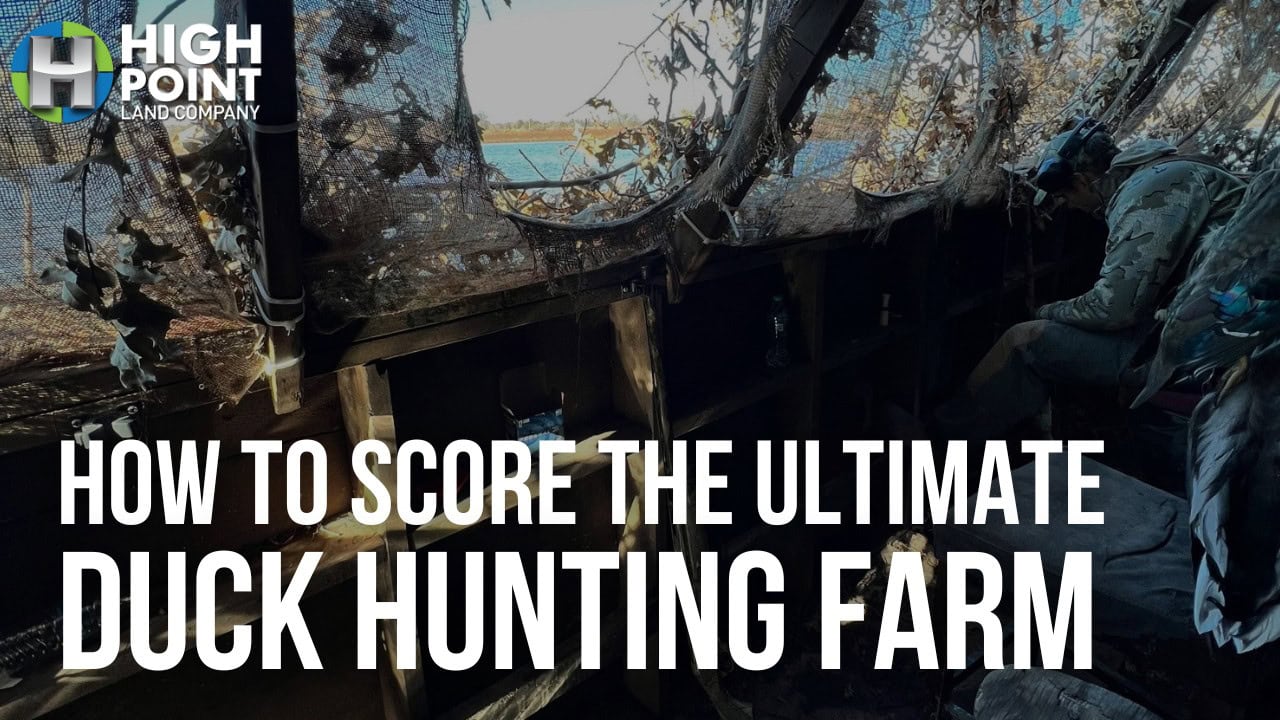Every duck hunter has that one story about the morning when everything clicked. The wind was right, the birds were flying, and you could barely reload fast enough. Those mornings happen when you hunt the right places at the right times. The truth is, some states just produce better duck hunting than others.
This year’s breeding surveys show duck numbers are finally moving in the right direction. Total breeding ducks jumped 5% from 2023, with mallards up 8% and wigeon numbers exploding by 55%. That sounds promising until you realize the birds still have to show up where you can hunt them. Location matters more than population reports, and picking the wrong state can leave you staring at empty skies while hunters three states over limit out by 9 AM.
What Makes a Great Duck Hunting State
Not all duck hunting states are created equal. The good ones share a few things that bring birds back year after year and keep hunters coming back, too.
- Access to major flyways where millions of birds funnel through each fall.
- Wetlands, rivers, flooded fields, and crop zones provide food and shelter.
- Strong bird numbers and species variety for consistent action throughout the season.
- Flexible hunting rules and long seasons that give you plenty of chances.
- A mix of public land access and private land opportunities that fit different budgets.
1. Arkansas: Timber Duck Capital
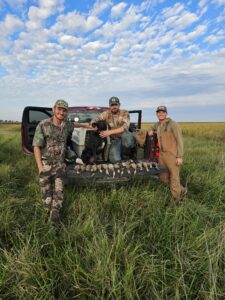
Arkansas still owns the flooded timber game. The Grand Prairie built its reputation on those classic green tree reservoir hunts where mallards drop into the timber like they were born to do it. Every serious duck hunter knows the stories from Stuttgart and the legendary shoots that made Arkansas famous.
The problem is that everyone else knows those stories, too. Hunting pressure has gotten intense, with guides starting their seasons in Canada and working their way south. Competition for the best spots is intense, but the birds still appear when conditions are right. Public Wildlife Management Areas give everyone a shot, while private clubs command premium prices for good reason. If you can handle the crowds and competition, Arkansas still delivers the kind of timber hunting that made it legendary.
2. California: Pintail Central in the Pacific Flyway
California gets overlooked by a lot of hunters, but the Central Valley puts more ducks on the strap than most people realize. The Grassland Ecological Area covers 240,000 acres of the best waterfowl habitat in the western United States. When water levels are good, like they have been this year, the place fills up with pintails, wigeon, teal, and plenty of mallards.
Merced County alone puts more ducks in hunters’ bags than entire states back east. The downside is that everything costs more in California, from gas to hunting leases to land prices. But if you can afford it, the shooting can be spectacular. State and federal refuges provide public access, while private clubs offer the kind of hunting that makes you understand why people pay California prices.
3. Iowa: Under-the-Radar Flyway State
Iowa does not get the press that Arkansas and California do, but smart hunters have been quietly filling limits there for years. The state sits right in the migration corridor, and 2024 surveys show mallard breeding numbers up 8% across the upper Great Plains. That translates to more birds funneling through Iowa’s backwaters and prairie potholes.
The best part about Iowa is the lack of pressure. You are not fighting crowds for parking spots or racing other boats to the good holes. Mississippi backwaters, shallow lakes, and restored wetlands hold birds throughout the season. All that agriculture makes it perfect for field hunting too. Hunters who take time to learn the local patterns find consistent success without the circus atmosphere of more famous destinations.
4. Louisiana: Coastal Habitat and Big Numbers
Louisiana hunting is all about timing and big numbers. When birds stack along the Gulf Coast during late migration, the shooting can be unreal. Gadwall, teal, redheads, and pintail use everything from rice fields to salt marshes. Recent counts show Louisiana had its strongest late-season duck populations in nearly five years.
The state runs a lot of outfitters, so guided hunting is easy to find. Land investment opportunities exist, but you have to factor in hurricane risk. The good news is habitat bounces back fast after storms. Late-season hunters often find the best action when northern states freeze up and push birds south. Just be ready for weather that changes fast and water conditions that can shift overnight.
5. Minnesota: Divers and Cold Weather Push
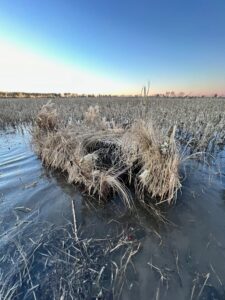
Minnesota specializes in diving ducks that most hunters never target seriously. Bluebills, ring-necked ducks, and canvasbacks use the state’s massive lake systems during migration. Mississippi headwaters and Lake of the Woods can produce incredible shoots when the timing aligns with the weather.
This year was tough for Minnesota hunters due to warm weather through most of duck season, followed by an arctic blast during Thanksgiving week. That shows how much the weather affects success up north. When cold fronts hit and northern waters freeze, Minnesota can deliver outstanding hunting. The key is being flexible and ready to move when conditions change.
6. Missouri: Mid-Migration Magnet
Missouri sits in the sweet spot of the Mississippi Flyway, where birds naturally concentrate. Daily bag limits of 6 ducks, with 4 mallards allowed, give hunters plenty of opportunity. Flooded cornfields, wetlands, and timber zones provide the variety that keeps different species around throughout the season.
Grand Pass, Otter Slough, and the river bottoms have been producing for decades. Missouri offers good public access and reasonable private land prices compared to other flyway states. The state has a long tradition of duck clubs and land ownership that appeals to hunters looking for long-term arrangements.
7. North Dakota: DIY Paradise for Waterfowlers
North Dakota rewards hunters willing to work for their birds. The Central Flyway location means early-season action when birds first start moving south. Sloughs, potholes, and prairie fields fill up during September and early October. Lower population means more access and fewer crowds.
The state excels in dry field hunts and mixed bags with both ducks and geese. Perfect for non-resident landowners who want seasonal properties. DIY hunters find plenty of public land opportunities and farmers willing to grant permission. Just be ready for weather that can turn harsh fast, and long drives between hunting spots.
8. Oklahoma: Up-and-Coming Duck Hunting State
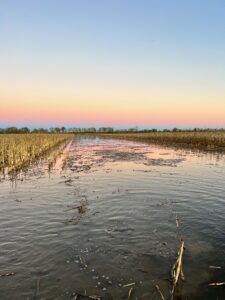
Oklahoma has quietly built a solid reputation over the past decade. Flooded fields and reservoirs fill with late-season birds as northern waters freeze. Central Flyway access plus milder winters create conditions that hold birds longer than states further north.
Good leasing opportunities and reasonable private land prices make Oklahoma attractive for hunters establishing long-term hunting arrangements. Less crowded than Arkansas and Texas, giving hunters room to explore and develop new spots. The hunting culture is strong, and local knowledge can make a huge difference in success.
9. Texas: Diversity and Volume in One Place
Texas offers everything from sandhill cranes to pintails, depending on which part of the state you hunt. Multiple flyways converge, creating opportunities for hunters who understand the timing. South and East Texas regions provide rice field and coastal marsh hunting that can be spectacular when conditions align.
Strong private land culture means most good hunting happens on leased property. Long seasons and liberal bag limits maximize opportunity. Texas represents solid investment potential with strong land appreciation, but you pay for that stability. The state’s size means hunters can target different regions based on timing and species preferences.
10. Wisconsin: Late-Season Hotspot with Habitat Diversity
Wisconsin benefits from overlapping flyways that create unique hunting opportunities. Mallards, canvasbacks, goldeneyes, and teal use different habitats throughout the season. Pool 9, Horicon Marsh, and the Green Bay areas provide some of the most consistent hunting in the upper Midwest.
A mix of flooded timber, rivers, and northern lakes appeals to different duck species. Long seasons and cold temperatures create late-season opportunities when birds get pushed down hard. Wisconsin hunters learn to be patient and wait for the right weather patterns to trigger major movements.
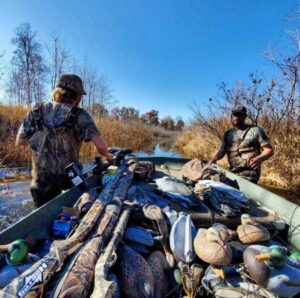
Choose the Right State, Secure Your Spot
The best duck hunting happens when you control your own destiny. Renting blinds and hoping for public land draws gets old fast. Smart hunters invest in land for sale in states where birds want to be, not just where hunting is convenient.
Farms for sale in prime flyway states often include wetlands and crop fields that naturally attract waterfowl. You get cont
rol over hunting pressure, habitat management, and season timing. Recreational Land for sale in places like Missouri, Iowa, and Wisconsin gives hunters the foundation for decades of consistent hunting. When you own the right ground in the right state, those perfect mornings happen a lot more often.
Do you want to learn more?
If you are looking to find your perfect duck hunting farm, reach out to one of the High Point Land Company agents, and we will be a guiding partner. For more questions regarding land real estate, visit our YouTube Knowledge Center.
